Key Themes
Matthew Bourne’s interpretation of this classic fairy tale has, at its heart, a true war-time romance. A chance meeting results in a magical night for ‘Cinderella’ and her dashing young RAF pilot, together for just long enough to fall in love before being parted by the horrors of the Blitz.
Whilst the original story has been reimagined for modern audiences, the core themes of this classic tale remain at the core of the New Adventures version.
Family, conflict and time, as well as archetypal literary motifs such as ‘life and death’, all play a role in this story.
Family
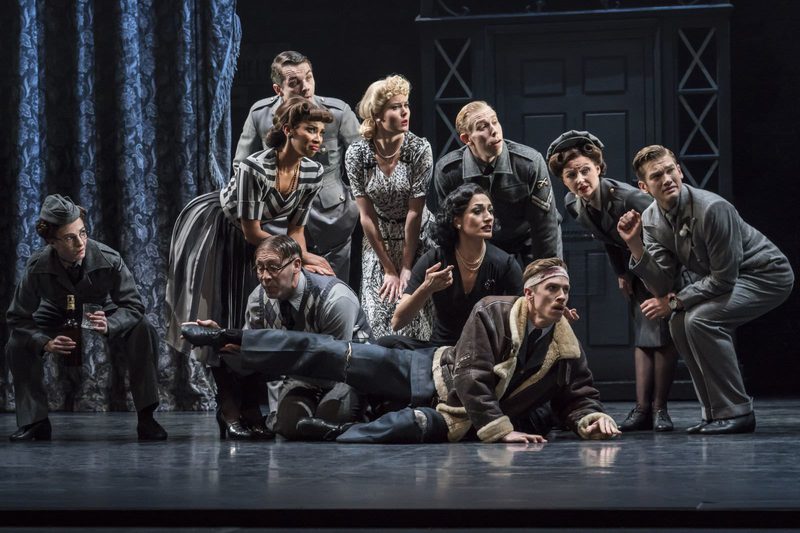
Family is one of the key themes in the original version of Cinderella, as well as in Matthew Bourne’s version. The show is full of complex, and often quite challenging, personal relationships between the characters.
Cinderella herself is central to this, and the difficult relationship she has with her harsh and manipulative stepmother, Sybil, influences all the other connections she has with those around her. Sybil ostracises her step-daughter through differential treatment. We see that Cinderella is isolated within the family home, and tormented by the people around her – something that is actively and overtly encouraged by Sybil. Whilst Cinderella is left to take care of the home and her ill father, Sybil’s own children are left to live a more care-free existence. When invitations arrive for the ball, Sybil hands one out to each member of the family, except Cinderella.
We see Cinderella’s ability to form successful bonds with people being put at the mercy of family members who do not have her best interests at heart. We watch as her father resigns himself to a position of less power, due in part to the deterioration of his health, and in part due to the vehemence with which the woman he married treats his daughter.
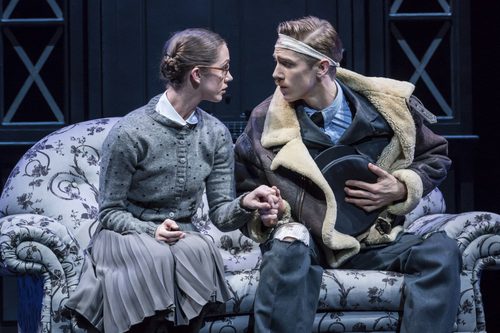
Even Cinderella’s relationship with the pilot is impacted by Sybil’s disdain for her. As Sybil takes purposeful actions to derail the growing connection these two young-people have for one another, we wonder whether love will win through.
Through the family relationships that play out in Cinderella we witness all varieties of human emotions laid bare – fear, anger, pride, envy, frustration, grief, joy, optimism and of course, love.
We also understand the positive message of change, as we see by the end of the show, that many of the family members that had treated Cinderella so poorly have grown kinder. We journey with these characters as their own personalities evolve over the course of time.
In Act One we meet a family governed by Sybil, the dominant matriarch-figure, whose passionate dislike of Cinderella encourages the others to join in with the cruel and harsh treatment she dishes out. We wonder whether it is Cinderella’s close relationship to her father, that has incited envy in Sybil, thus causing her to be so volatile towards her. We notice that Cinderella’s two step-sisters are more lavishly dressed, and we suspect they have a much easier life. One of Cinderella’s step-brothers taunts her sexually, and whilst this is brushed off by other family members as playful, we see a more threatening and sinister message in his behaviour.
The accumulative distress caused to Cinderella by the behavior of those around her, eventually gives her no option but to leave. Whilst the idea of leaving her father behind, whom she loves dearly is a concern for Cinderella, she has also feels unsupported by him, and so with a heavy heart she flees her tormentors.
In Act Two we find the family and their partners at the ball. So too, do we find a very different looking and acting Cinderella. Gone are the drab grey clothes, and the glasses, and in their place, is a sumptuous bejeweled gown, make-up and a chic and fashionable hair-do.
The family gradually come to notice that this beautiful woman is familiar to them, and they begin to realise this ‘belle of the ball’ is none other than Cinderella. Confusion turns to shock and mild amusement, and then quickly to anger and perhaps most destructively of all, to jealousy.
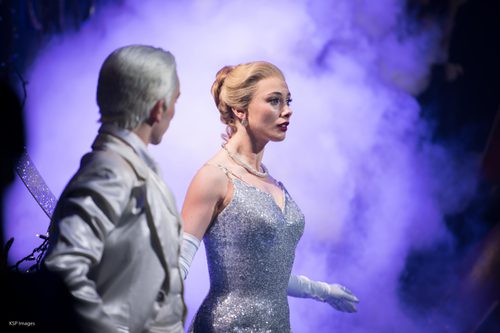
This leads to Sybil and her heavily influenced cohort seeking Cinderella’s downfall. An opportunity presents itself to them when they find out Cinderella was injured in the Blitz and is being treated at a local hospital. Feigning a concerned family, they try to make their way to Cinderella’s bedside. Thwarted by hospital staff the family give-up, except Sybil. Reappearing on her own Sybil manages to enter Cinderella’s room and attempts to suffocate her with a pillow, before being stopped by the intervention of a quick-acting doctor in a white coat, who also appears to be Cinderella’s protector, the male angel figure. As the rest of the family rush in behind him, we see that they too are shocked by what they have seen, and that they had not anticipated Sybil going so far in her vendetta against Cinderella.
Sybil’s actions have been so abhorrent that her family now take Cinderella’s side, separating themselves from Sybil and her wickedness.
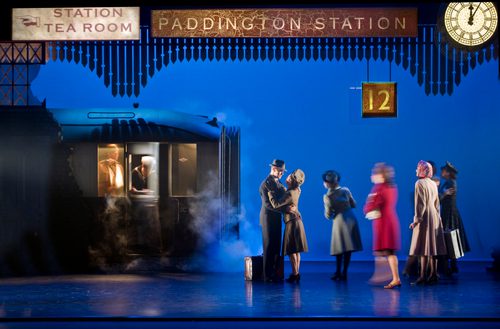
We see at the end of the show, as Cinderella and her pilot are about to board a train to begin a new life together, that Cinderella’s family have come to bid them farewell. Cinderella’s father noticeably forms part of this group of well-wishers, whilst we also note Sybil’s absence amongst them. Here we see tenderness, affection and an enjoyment of one another that we had not witnessed previously, and we feel there has been a genuine sea-change in the relationships between Cinderella and her family members.
Life and Death
The show is also filled with antagonistic themes such as:
- Life and death
- Good and evil
- Hope and fear
- Destiny and freewill
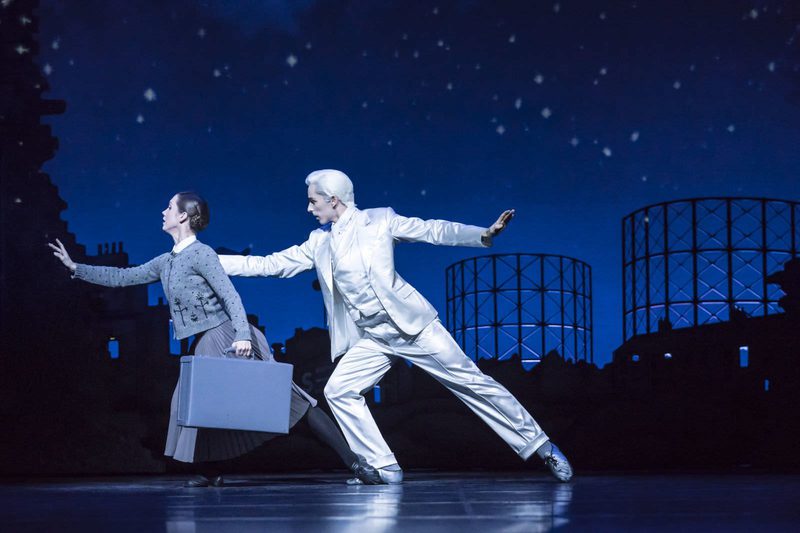
Journeying between the extremities of each of these, we explore the fragility of human existence, and the reality of life.
Through the character of Sybil, we see how corrosive a nefarious individual with a sphere of influence can be, within a family construct. Yet, we also see how those under her power were eventually repelled by her depravity, and eventually became to be reconciled with Cinderella. This reflects the classic concept of good winning over evil.
We see characters spurred on by hope, whilst at the same time conquering their inner fears. By leaving the family home Cinderella herself conquers her inner fears, propelled by the aspiration of finding a better life for herself.
Matters of life and death are raised consistently throughout the show, as we witness the horrors of the bombings, the appearance of babies, the poor health of Cinderella’s father, the devastation at the Café de Paris, and of course, the attempt on Cinderella’s life by her own stepmother.
We consider the fine-lines between mortality and demise; and float somewhere between actuality and potentiality whilst the Angel steers us to consider past lives, current lives, and possible future lives.
At the very end, we see a young woman sitting at a table reading a book. All around her young men and women separating off in couples as they set about building new futures for themselves post-war. This character appears in stark contrast to be very much alone. Whilst she distracts herself from the goings-on around her with her novel, we see the male angel figure appear behind her and gently place a hand on her shoulder. In that moment, as she senses something and looks up from the pages of her book, we see that something different might be on the horizon for this individual. This simple act reminds us about fate, and begs us to question how much, or little, we are in control of our own destiny.
Conflict
Embedded deep within all of these diametric and opposing themes, is the idea of conflict: conflict of self, conflict of duty versus volition, conflict of head versus heart, conflict of morals, and of course all set against the backdrop of the conflict of war.
It is noticeable that the young adults in Cinderella’s family are not dressed as service men and women, like the majority of their counterparts. Is this the wishes of Sybil the controlling step-mother? Is this because of a selfishness on their part, that they feel it is other peoples’ responsibilities to fight the war for them? Are they conscientious objectors who have refused to participate as a peaceful protest?
We aren’t sure what the reasons are, but this separation does invite us to think about morality, allegiance, and obligation.
Time
Propelling us forward, and reminding us that all of us have a finite time upon the earth, is time. Time, and the preciousness of it, is a key element that is rooted throughout the performance. Setting the story in war-time London amidst the Blitz acts as a consistent reminder to us about the temporal nature of existence. We see people going about their day to day lives whilst caught up in the midst of battle, and we speculate on how this impacts their view of life. We witness people falling in love, getting engaged to be married very swiftly and we suspect this is because life feels more precious when viewed from the bombed-out streets of London.
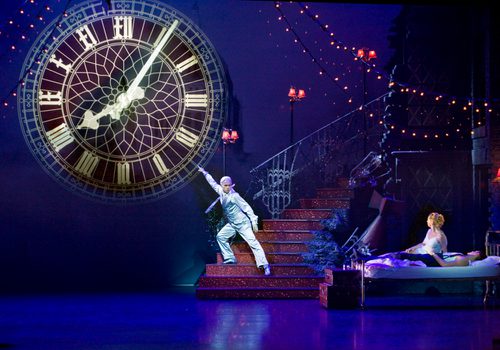
The male angel helps to define this more clearly for us since, he not only appears as protective-figure to Cinderella, but also concurrently acts as an ‘angel of death’. At the end of Act Two as the ballroom breaks apart from the attack from enemy bombs, we see him as a manipulator of time. We understand that the angel plays some part in the fate of the people he comes into contact with.
At the beginning of Act Three we also see the angel casting the ‘shadow of death, as he singles out people on the streets of London whose time is up.
Go Back